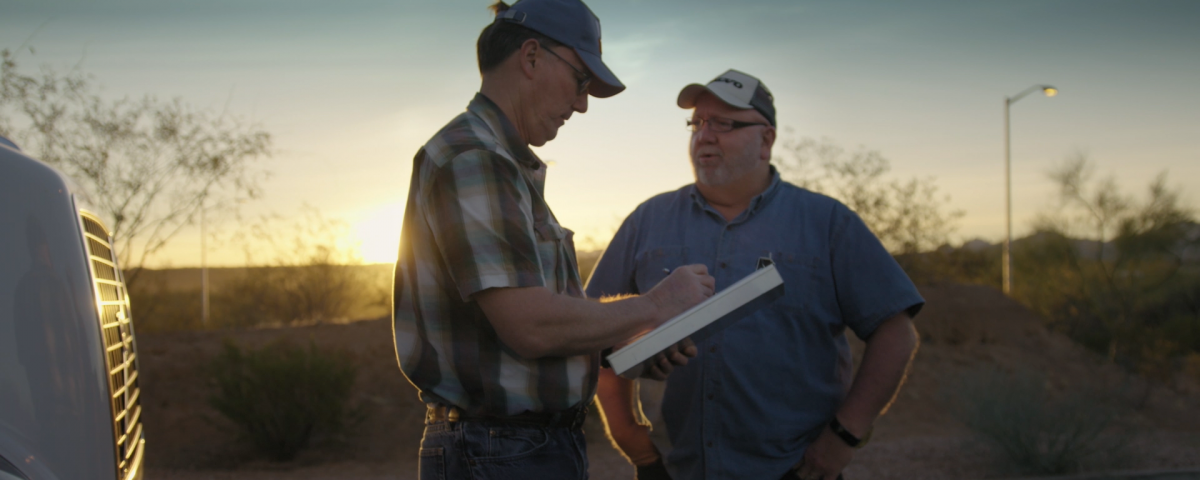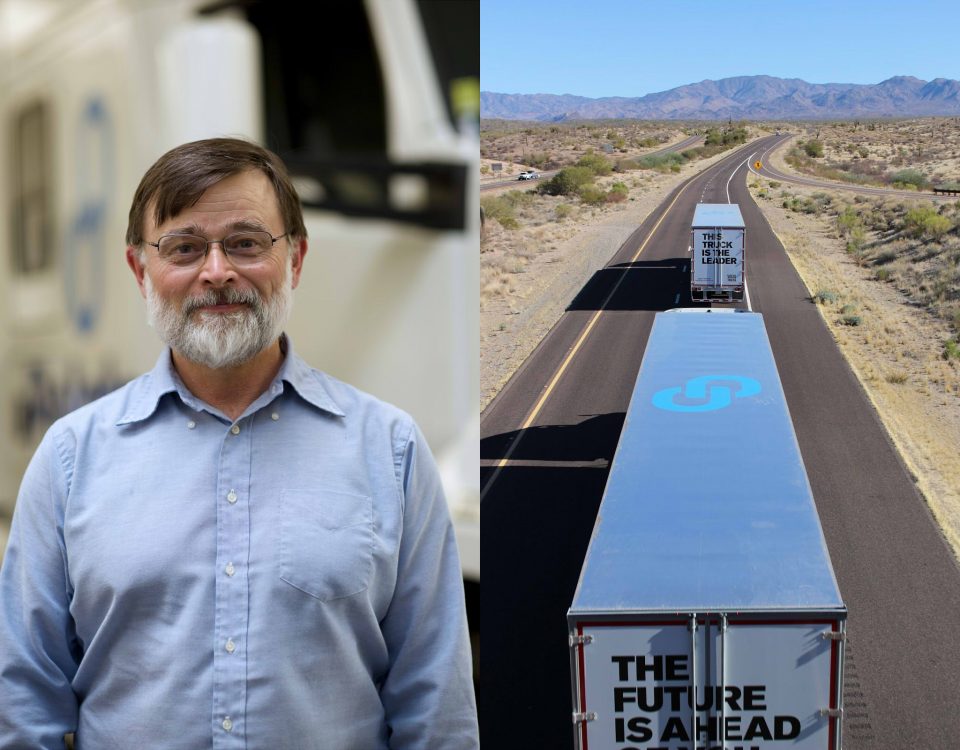
Our PlatoonPro Retrofit Kit Will Help Installers Get the Job Done
May 8, 2020
Human-led Truck Automation Uses the World’s Best Perception Sensor
September 28, 2020It Takes Two to Platoon

Since joining Peloton in 2016, Jake has set the record for most miles platooned. Jake’s previous experience includes working under contract for NHTSA, doing traffic accident investigation.

While most of my Peloton coworkers are working from home these days to comply with the local COVID-19 shelter-in-place mandate, I’ve been putting in some long, lonely days out on the road lately. That’s because Peloton test drivers like myself and Derrick Loo are hauling relief supplies to help US carriers address critical supply chain challenges. And while it certainly would be nice to be home more, I’m glad to be doing my part–and glad to be doing a job I love: driving trucks.
The thing is, I miss platooning, and I look forward to getting back to it.
The camaraderie of platooning is certainly something I miss right now. But I miss even more having that extra set of eyes on the road. Platooning drivers really do work as a team; they look out for themselves, and they look out for each other. And PlatoonPro supports both the lead and follow driver, allowing them to share essential information in real time.
Whether I’m testing the latest version of PlatoonPro or demonstrating the benefits of platooning to fleets and shippers, I actually feel safer platooning than I do driving solo.
The bane of every truck driver’s existence: on-ramps
As a professional driver, I always need to know what’s ahead of me, what’s behind me, and what’s beside me, especially around highway on-ramps and off-ramps. That responsibility certainly doesn’t go away when I’m driving a PlatoonPro-equipped truck: as a lead or follow driver, I am still responsible for steering and controlling my own truck.
When it comes to dealing with somebody coming onto the highway, I’ve pretty much got the same options as any driver: adjust my speed or change lanes. But, as a platooning driver, I can talk to my partner over PlatoonPro’s hands-free radio, and our trucks are always in communication over the automotive-grade wifi connection.

Team communication enhances situational awareness
There was this time down in Florida, at the end of a 300-mile platooning run: I’m driving the lead truck, and there’s traffic in front of me, there’s traffic to my left. I spot this four-wheeler, a little silver car, coming on ahead. I’m checking its speed against mine, and I can see a situation developing, so I start slowing my truck to create space. The follow truck slows simultaneously, thanks to PlatoonPro’s coordinated braking.
But I can clearly see that the car is not speeding up enough to merge in front of me, so I check my mirrors again. It looks like there’s room to my left, but when I radio to Dave, my partner in the follow truck, he tells me, “Not a good idea. I’ve got someone coming up and they’re moving really fast.”
Now the platoon system display tells me that Dave has disengaged the platoon and is taking over the follow truck. Good thinking. I pull ahead, Dave slows some more, and we create a space for the little silver car to slip into. Bingo.
I look over at the driver of the little silver car as I’m passing. He’s got a cell phone glued to his ear, and he’s staring straight ahead to where the on-ramp ends. I don’t believe he had a clue as to what had just happened.
It Takes Two to Platoon
All professional truck drivers have to have good instincts: their lives and the lives of those around them depend on it. In a platoon, both drivers are using their instincts, and both must remain alert and aware.
Lead drivers set the pace for the platoon, braking and accelerating according to traffic and road conditions. They’re going to see what’s going on ahead of the platoon, and they’re typically making the call about how to handle situations like merging traffic and vehicles on the shoulder.
Follow drivers are going to spot a potential cut-in or cut-through, so they might decide to disengage the platoon and increase the space between trucks.
The PlatoonPro driver training program covers operation and communication skills so drivers can get up to speed in less than a day.
Drivers Are at the Heart of the PlatoonPro System
Peloton recognizes that lead and follow drivers have situational information that is unique to their position in the platoon. That’s why both drivers have to agree to platoon, but either driver can decide to end the platoon — at any time, for any reason.
Teamwork and communication is designed into the core of PlatoonPro to support drivers. I use the private radio channel to share situational information with my partner. And the system display shows status at a glance, so both drivers always know what is going on with the platoon.
When I’m driving the follow truck, and the lead driver warns me of a potential hazard ahead, I scan to the system display, where there’s live video of the road ahead of the lead truck. I find it reassuring that I can confirm with my own eyes what that lead driver is telling me.

As a professional driver, I’m used to being in charge of my own truck and always watching out for changing road and traffic conditions. As a platooning driver, I’m still in control of my truck, but now I have a partner driver I can check in with. I welcome having that second set of eyes on the road, along with the PlatoonPro system helping us navigate the road together.
The camaraderie is an added bonus.
Want to know more about platooning from a driver’s perspective? Check out the ‘For Drivers’ section of Peloton’s website.



